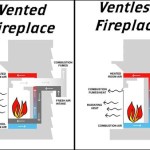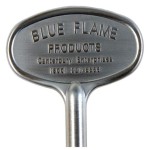Fireplace Inserts in Minnesota: A Guide to Efficiency and Comfort
Minnesota winters are characterized by their extended duration and consistently low temperatures. Consequently, home heating becomes a paramount concern for residents throughout the state. While central heating systems are prevalent, many Minnesotans seek supplemental heating solutions to enhance comfort, reduce energy costs, and add aesthetic appeal to their living spaces. Fireplace inserts represent a popular and effective option for achieving these goals.
A fireplace insert is essentially a self-contained heating appliance designed to be installed within an existing masonry or prefabricated fireplace. They operate using various fuel sources, including wood, gas, and electricity. Unlike traditional open fireplaces, which are notoriously inefficient due to significant heat loss up the chimney, fireplace inserts are engineered for significantly improved heat output and reduced emissions. Selecting the appropriate fireplace insert for a Minnesota home requires careful consideration of factors such as heating needs, fuel availability, budget, and space constraints.
Understanding the Benefits of Fireplace Inserts
The adoption of fireplace inserts in Minnesota homes provides a multitude of advantages. Foremost among these is improved heating efficiency. Traditional fireplaces can experience heat efficiency ratings as low as 10%, meaning that the vast majority of the heat generated is lost through the chimney. In contrast, fireplace inserts boast efficiency ratings ranging from 70% to over 80%, depending on the fuel type and model. This translates into significantly more heat retained within the home and a corresponding reduction in heating costs.
Improved air quality is another key benefit. Open fireplaces can contribute to indoor air pollution by releasing smoke, particulate matter, and carbon monoxide into the living space. Fireplace inserts, particularly those certified by the Environmental Protection Agency (EPA), are designed with advanced combustion technologies that minimize emissions. These inserts often feature sealed combustion chambers and catalytic converters, which reduce the release of harmful pollutants into the air. This is especially important in Minnesota, where homes are often tightly sealed to conserve heat, potentially trapping pollutants indoors.
Enhanced safety is also a crucial advantage. Open fireplaces pose several safety hazards, including the risk of sparks escaping and igniting nearby materials, as well as the potential for chimney fires caused by creosote buildup. Fireplace inserts are typically enclosed within a metal firebox and feature a sealed door, which significantly reduces the risk of sparks escaping. Furthermore, the controlled combustion process in fireplace inserts minimizes creosote buildup, reducing the likelihood of chimney fires.
Beyond practical benefits, fireplace inserts offer aesthetic enhancements to living spaces. They are available in a wide range of styles, finishes, and sizes to complement various décor preferences. From traditional cast-iron designs to sleek modern models, fireplace inserts can transform an existing fireplace into a focal point of the room. Many inserts also feature realistic flame patterns and ember beds, creating the ambiance of a traditional fire without the associated inefficiencies and hazards.
Choosing the Right Type of Fireplace Insert for Minnesota Homes
The selection of a fireplace insert hinges on several factors, primarily the fuel source, heating capacity, and desired aesthetic. Wood-burning inserts are a popular choice in Minnesota, where wood is often readily available and relatively inexpensive. Wood inserts offer a traditional heating experience and can provide significant heat output, particularly during power outages. However, wood inserts require more maintenance than other types, including regular wood loading, ash removal, and chimney cleaning. EPA-certified wood inserts are recommended to ensure cleaner burning and reduced emissions.
Gas fireplace inserts offer convenience and ease of use. They are typically fueled by natural gas or propane and can be operated with the flip of a switch or the touch of a button. Gas inserts provide consistent heat output and require minimal maintenance. They are also available in a variety of styles, from traditional log sets to contemporary glass media. Venting requirements for gas inserts vary depending on the model and fuel type, so it is crucial to consult with a qualified installer.
Electric fireplace inserts offer a simple and convenient heating solution. They do not require venting and can be installed in virtually any room with an electrical outlet. Electric inserts provide supplemental heat and often feature realistic flame effects, creating a cozy ambiance. While electric inserts are generally less expensive to purchase than wood or gas inserts, their operating costs can be higher, particularly in areas with high electricity rates. They are best suited for providing zone heating in smaller spaces.
The heating capacity of a fireplace insert is measured in British Thermal Units (BTUs). The appropriate BTU rating depends on the size of the room being heated, the insulation level of the home, and the climate. A general rule of thumb is to select an insert with a BTU rating that is sufficient to heat the designated space without being excessively oversized. An oversized insert can lead to overheating and decreased efficiency. Consulting with a heating professional can help determine the optimal BTU rating for a specific application.
Beyond fuel type and heating capacity, aesthetic considerations play a significant role in the selection process. Fireplace inserts are available in a wide range of styles, finishes, and sizes to complement various décor preferences. Consider the existing style of the fireplace and the overall aesthetic of the room when choosing an insert. Options include traditional cast-iron designs, contemporary stainless steel models, and inserts with decorative brick or stone panels. The size of the insert should also be proportional to the size of the fireplace opening.
Installation and Maintenance of Fireplace Inserts
Proper installation is paramount to the safe and efficient operation of a fireplace insert. It is strongly recommended to have a qualified professional install the insert, particularly for wood and gas models. Installation typically involves preparing the fireplace opening, installing a venting system, and connecting the insert to the fuel supply or electrical outlet. A professional installer will ensure that the insert is installed according to manufacturer's specifications and local building codes.
Venting requirements vary depending on the type of fireplace insert. Wood inserts typically require a stainless steel chimney liner that extends the full length of the existing chimney. Gas inserts may require a direct vent system that draws combustion air from outside and exhausts flue gases outdoors. Electric inserts do not require venting. Proper venting is essential for ensuring safe and efficient combustion and preventing the buildup of harmful gases.
Regular maintenance is essential for maximizing the lifespan and efficiency of a fireplace insert. Wood inserts require regular ash removal and chimney cleaning to prevent creosote buildup. Gas inserts should be inspected annually by a qualified technician to ensure proper operation and identify any potential problems. Electric inserts typically require minimal maintenance, but the heating elements and fan should be inspected periodically.
For wood-burning inserts, creosote buildup is a significant concern. Creosote is a flammable substance that accumulates in the chimney as a byproduct of wood combustion. Regular chimney cleaning, ideally at least once per year, is essential for removing creosote and preventing chimney fires. The frequency of chimney cleaning depends on the type of wood burned, the burning habits of the homeowner, and the design of the fireplace insert.
Proper wood storage is also important for ensuring efficient combustion in wood-burning inserts. Wood should be seasoned for at least six months to reduce its moisture content. Wet wood burns inefficiently and produces more smoke and creosote. Store wood in a dry, well-ventilated area, away from direct contact with the ground. Cover the wood pile with a tarp to protect it from rain and snow.
For gas fireplace inserts, regular inspection of the burner and venting system is crucial. A qualified technician can check for gas leaks, ensure proper burner operation, and inspect the venting system for any obstructions or damage. It is also important to clean the glass door of the insert periodically to remove soot and grime.
Selecting and maintaining a fireplace insert requires a thoughtful approach, considering fuel type, heating needs, aesthetic preferences, and safety considerations. Consulting with qualified professionals, including heating contractors and chimney sweeps, is recommended to ensure a safe and efficient installation and ongoing maintenance. By investing in a high-quality fireplace insert and adhering to proper maintenance practices, Minnesota homeowners can enjoy enhanced comfort, reduced energy costs, and a cozy ambiance throughout the long winter months.

Minneapolis St Paul Gas Fireplace Inserts Replacement And Installation

Wilkening Fireplace Fireplaces Doors Inserts Walker Mn

Condor Fireplace Stone Company Minnesota We Can Do It All

Gas Inserts Minnesota Grill Fireplace

Electric Fireplace Inserts Best Fire Hearth Patio

Wilkening Fireplace Fireplaces Doors Inserts Walker Mn

Kozy Heat Nordik 34i Gas Fireplace Insert Fergus

Fireplace In Minneapolis Mn Chimney Sweep Repair

Electric Fireplaces Minnesota Gas Grill Fireplace

Chaska 25 Gas Fireplace Insert With Remote Small Log
Related Posts








